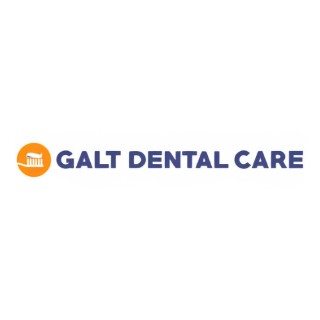Have you ever encountered a situation where your system does not recognize your USB drive or you get a USB No Media Error. Although fixing the USB No Media Error may seem a little complicated, you can easily find the solution through this article.

Why is there no media in the specified device?
To fix the USB no media issue, we need to understand what could have caused this problem first. This will help you analyze the issue on your own and you can easily avoid these triggers ahead as well. Mostly, the USB drive no media error is caused by these problems.
● You could have removed the USB drive while the computer was still accessing it.
● The USB drive can have a bad sector or corrupt storage.
● The file system or the index table in the drive can also be corrupted.
● It can be infected by malware or virus.
● The Master Boot Record or the Partition Boot Record in the device could be compromised.
● The USB drive could be write-protected or have restricted settings.
● The media could have exhausted its read/write cycle.
● Any other logical or physical issue with the USB drive.
How to Fix the No Media USB Problem?
As you can see, the flash disk no media error can be resulted due to all kinds of physical, logical, or firmware-related issues. Needless to say, there are multiple things that you can do to fix it, corresponding to its causes. Therefore, consider some of these options to do the no media USB fix on your system.
Solution 1: Reconnect the USB drive
We will start with the easiest way to resolve the USB drive no media problem that users face while formatting it. Firstly, disconnect the USB drive safely from your computer and restart it. Also, check the USB port and the flash drive for any debris or physical damage. While your system restarts, connect the USB drive again and see if the error sustains.
Solution 2: Repair the Disk with an Error Checking Feature
One of the best things about Windows is that it offers tons of native features and utility tools. If you are getting the USB drive no media prompt time and time again, then take a step back and let Windows fix this. To repair the disk, you can take the assistance of the Windows Error Checking feature. Here’s how no media in USB flash drive can be fixed by Windows.
① Firstly, attach your USB drive to your Windows computer and wait for it to be detected by it.
② Launch Windows Explorer and select the icon of the connected USB Drive from My Computer. Right-click and visit its Properties.
③ Go to the “Tools” section on the Properties window and click on the “Check” button under the Error Checking section.
④ Windows will automatically start checking the USB drive for any error. If it finds any issue, then you will be notified. Click on the “Repair Drive” once you get this prompt to run a thorough diagnosis.

Solution 3: Use the CHKDSK Command
If the Error Checking feature would not yield satisfactory results, then don’t worry – there are several other options to fix USB no media. For instance, you can take the assistance of the CHKDSK (Check Disk) command on Windows. This is an inbuilt utility command that would check the specific disk and fix all kinds of issues related to it. You can follow these steps and learn how to fix a flash drive with no media error on Windows.
① Connect the USB drive to your system and launch the Command Prompt by visiting the Start Menu. You can also launch it via the Run Prompt as well.
② Now, enter the “Chkdsk” command followed by the drive letter of the USB drive and the needed parameters to fix/repair it. The right syntax for the command would be:
chkdsk x: /f /r
Here, “x” would be replaced by the letter of the connected USB drive. Once you enter the command, just sit back and wait as Windows would try to do the no media flash drive fix.

Solution 4: Reinstall the Device Driver on Device Manager
Another reason for USB No Media could be that the USB driver is outdated or corrupted. In this case, you can contact the customer to get the latest driver to fix this issue. If you find that the driver is disabled, you can directly enable it to fix this issue.
If it is corrupted, reinstalling the driver may help:
① Right-click the Start icon, and click Device Manager.
② Find and click the Disk Drivers section. Right-click the USB device and click Uninstall device.

③ When the uninstalling process completes, the device will disappear from the list. After that, click the Action tab from the top, followed by Scan for hardware changes. Thus, the USB driver will be reinstalled.

Restart your computer to check whether the problem is solved or not.
Solution 5: Antivirus Scan
The USB no media issue can be caused by viruses or malware as well. If the methods introduced above don’t help, it’s suggested to run an antivirus scan to fix this problem.
① Type and enter Virus in the search box to launch Virus & threat protection.
② Click Quick scan. Or you can click Scan options to perform a full or custom scan.

③ Wait for the scanning process to complete.
Solution 6: Change Drive Letter
Changing the drive letter sometimes can solve most of the drive problems, including the USB no media error.
Follow this way:
① Right-click the Start icon, and select Disk Management.
② Right-click the USB drive and select Change Drive Letter and Paths.

③ Click Change.
④ Select a different letter from the drop-down list next to the Assign the following drive letter section.
⑤ Click OK to complete the changes.

Reboot your computer to check whether the USB no media error is fixed.
Solution 7: Enable USB device in BIOS
If the USB device is disabled in BIOS, it may also show USB no media error. In this case, we can enable it in the BIOS to remove this error.
① Restart your computer and enter BIOS.
② Find the USB Keyboard Support option in the motherboard, and change the from Disabled to Enabled.
③ Press the F10 key to save the changes and exit the BIOS.

Solution 8: Format the USB Drive via Diskpart
If you are not able to format the USB drive the usual way or keeps getting the flash drive no media prompt, then take the assistance of Disk Partition Utility. To do this, you need to first launch the Command Prompt on your system. This will forcefully format the USB drive and fix all kinds of issues with it. Though, this will also wipe the flash drive and all the saved data in it as well. To learn how to fix USB no media error via the Diskpart command, follow these steps:
① To start with, connect the USB drive to your system and launch Command Prompt on it. Enter the “diskpart” command to launch the Disk Partition utility.
② Now, enter the “list disk” command to view all the connected media and storage units to your system. From here, you can note the identifier for your USB drive.

③ Before you format it, you need to select the disk. This can be done by entering the “select” command followed by the disk identifier (like select disk 2).

④ Great! Once the disk is selected, just enter the “format” command and type the file system you wish to format it too. For example, to format it into the NTFS system, you can type “format fs=ntfs”.






